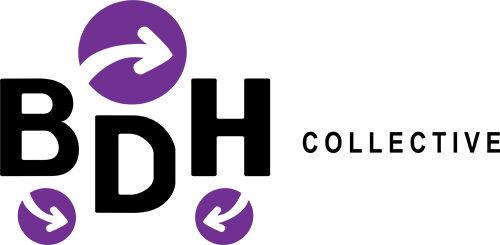Introduction
You’re spending hours every day on lead follow-up. Sending emails, tracking responses, scheduling calls, moving people through your pipeline. And despite all this effort, your conversion rate is mediocre. You’re working harder than your competitors but getting worse results.
The problem isn’t effort. It’s efficiency. You’re doing manually what should be automated. You’re being inconsistent when you should be systematic. You’re guessing when you should be using data. AI fixes all of this by converting more leads while requiring less of your time.
Why Hard Work Doesn't Equal High Conversions
Most businesses assume more effort leads to better results. You work longer hours on lead follow-up, your conversion rate should go up. But that’s not how it works because human effort doesn’t scale consistently.
You’re great at follow-up when you have twenty leads. You respond quickly, you’re thoughtful and personal, you remember details about each person. Then you get fifty leads and quality drops. You get a hundred and things fall through the cracks entirely. Your effort increased but your effectiveness decreased because manual work hits limits.
AI maintains quality regardless of volume. The same thorough follow-up, the same personalization, the same consistency whether you have ten leads or ten thousand. You’re not working harder to maintain quality. The system handles it automatically.
The Response Time Problem Killing Your Conversions
You’re probably responding to new leads within a few hours. That feels reasonable. But research shows that responding within five minutes converts at dramatically higher rates than responding within an hour. By the time you respond, the lead has often moved on.
This isn’t because you’re lazy. You’re busy. You’re in meetings, working on other things, not constantly monitoring for new leads. The delay is inevitable with manual follow-up. And it’s costing you conversions every single day.
AI responds instantly every time. A lead comes in at 2am, they get an immediate response acknowledging their interest and providing helpful information. You wake up to leads that are already engaged instead of leads waiting for your first response. This speed advantage alone can double your conversion rate.
Consistency That Humans Can't Maintain
Your follow-up quality varies dramatically based on how busy you are, what mood you’re in, whether you remembered to check your system that day. Some leads get amazing attention. Others get forgotten until it’s too late. This inconsistency kills overall conversion rates.
You’re converting the leads you happen to follow up well with and losing the rest. If you followed up consistently with every lead the way you do with your best ones, your conversion rate would be much higher. But you can’t because you’re human and humans are inconsistent under pressure.
AI is perfectly consistent. Every lead gets the same quality follow-up at the right times. No leads fall through cracks. No leads sit waiting because you forgot about them. The consistency itself drives higher conversion because everyone gets properly nurtured instead of just the lucky ones you happened to remember.
The Personalization You Can't Scale
You know personalization matters. When you take time to understand a lead’s specific situation and address it directly, conversion rates are way higher than generic outreach. But doing this for every lead takes hours you don’t have.
So you’re stuck choosing between generic outreach to everyone or personalized outreach to a few. You sacrifice either volume or quality. AI lets you have both by automating personalization based on data.
Someone downloaded your pricing guide? They get content about ROI and value. Someone came from an ad about a specific problem? They get information solving that problem. Someone visited your case studies page? They get similar success stories. This personalization scales to every lead without requiring hours of manual research and customization.
Lead Scoring That Tells You Where to Focus
All your leads are not equal. Some are ready to buy soon. Some are researching and won’t buy for months. Some will never buy. Treating them all the same means wasting time on leads that aren’t ready while missing opportunities with leads that are.
You’re probably not scoring leads systematically. You’re going with gut feeling about who seems interested. This leads to spending hours nurturing someone who was never going to buy while a ready buyer slips away because you were busy with someone else.
AI scores leads automatically based on behavior. Someone visiting your pricing page five times, opening every email, and viewing testimonials scores high. Someone who opened one email and hasn’t been back scores low. You focus your personal time on high-scoring leads while low-scoring leads stay in automated nurturing until they show more interest.

The Follow-Up That Never Stops
You probably follow up once or twice and then give up if you don’t get a response. Not because you don’t care, but because you forget or feel awkward about being persistent. This means you’re losing leads who were interested but just got busy or distracted.
AI follows up consistently until someone engages or explicitly opts out. First follow-up immediate. Second follow-up three days later. Third a week after that. The system maintains contact without you having to remember or feel uncomfortable about persistence.
This isn’t spam. It’s professional persistence. You’re providing value in each follow-up, not just saying “following up on my last email.” Many leads convert on the fifth or sixth touch point who would have been lost after the first or second if you were following up manually.
Qualification That Happens Automatically
You’re probably spending time on sales calls with unqualified leads. They seemed interested so you scheduled time, then you discover they don’t have budget, or they’re not decision makers, or they’re not actually in your target market. That time is wasted.
AI qualification happens before leads get to you. Automated questions and behavior tracking identify whether someone is actually qualified. Budget, authority, need, timing. All assessed through automated interactions before a human gets involved.
You’re only talking to leads who are actually qualified and ready for a real sales conversation. Your close rate goes up dramatically not because you got better at selling, but because you’re selling to better prospects.
The Data That Improves Everything
Manual lead follow-up doesn’t generate useful data. You might track that you contacted someone and they didn’t respond, but you’re not learning what works and what doesn’t at scale. Every lead is a fresh start with no systematic learning.
AI generates data on everything. Which subject lines get opened? Which content drives engagement? What timing works best? Which approaches convert? You’re learning from every interaction and the system optimizes based on what actually works.
Your conversion rate improves continuously as the AI figures out what resonates with your specific leads. Month one you’re converting at ten percent. Month six you’re converting at fifteen percent using the same effort because the system learned what works.

Content That Works While You Sleep
You created content to help leads understand your offering. Case studies, guides, comparison sheets, ROI calculators. But leads have to stumble across this content or remember to look for it. Most never see the exact piece that would have converted them.
AI serves the right content at the right time automatically. Someone showing price sensitivity? They get ROI content. Someone comparing options? They get comparison information. Someone worried about implementation? They get quick-start success stories.
Your content becomes a conversion tool instead of just sitting on your website hoping people find it. Every piece serves a purpose in moving specific types of leads forward at specific stages.
The Time You Get Back
Add up how much time you currently spend on lead follow-up. Checking for new leads, sending initial responses, scheduling follow-ups, remembering to actually follow up, tracking who you’ve contacted and when. It’s probably ten to twenty hours a week minimum.
AI automation reduces this to maybe two hours a week. You’re reviewing high-priority leads that need personal attention and handling exceptions that automated systems can’t manage. Everything else runs automatically without your involvement.
That’s eight to eighteen hours weekly freed up. What could you do with an extra forty to seventy hours monthly? Sales calls with qualified leads? Business development? Product improvements? Actually having weekends? The time savings alone often justifies automation even before considering improved conversion rates.
When Human Touch Actually Matters
AI lead conversion isn’t about eliminating human interaction. It’s about making sure human interaction happens at the right time with the right leads. Early stage nurturing, qualification, and routine follow-up can be automated. Strategic conversations with qualified leads ready to buy need humans.
The handoff from automated nurturing to human sales should be seamless. You’re getting leads that are warmed up, qualified, and ready to have a real conversation. They’ve received consistent nurturing, they understand your offering, and they’ve shown strong buying signals. The sales conversation is productive instead of exploratory.
You’re spending your time on conversations that actually close deals instead of on routine follow-up that could be automated. Your effort goes to high-value interactions while AI handles everything else.
Starting Your Conversion Efficiency Journey
Look at your current lead follow-up honestly. What percentage of leads get timely follow-up? What percentage get consistent nurturing versus falling through cracks? How much time are you spending on this versus what you’re getting back in conversions?
Most businesses discover they’re spending huge amounts of time for mediocre results because manual follow-up doesn’t scale and can’t be consistent. Start by automating the most time-consuming parts. Usually that’s initial response and ongoing follow-up.
Get automated systems handling routine nurturing so you can focus on qualified leads ready for human conversations. This immediately improves both efficiency and conversion rates because consistency goes up while time investment goes down.
Measuring What Actually Improves
Don’t just track conversion rate. Track conversion rate relative to time invested. If your conversion rate goes from ten to twelve percent while your time spent goes from twenty hours to five hours weekly, you’re not just converting slightly better. You’re converting better while working seventy-five percent less.
This is what efficiency actually means. Better results with less effort. Many businesses improve conversion rates by fifteen to thirty percent while reducing time spent by sixty to eighty percent. Those aren’t incremental improvements. They’re transformational changes to how lead conversion works.
Also track lead velocity. How long does it take for leads to convert? AI typically speeds this up because consistent, timely follow-up moves people through faster than sporadic manual outreach.
The Competitive Reality
Your competitors using AI lead conversion are spending less time getting better results. They respond faster, follow up more consistently, personalize at scale, and focus their human effort where it matters. If you’re doing everything manually, you’re at a systematic disadvantage.
This gap widens over time as their AI systems learn and optimize while your manual approach stays the same. They’re getting better at conversion continuously while you’re working harder to maintain the same results.
The businesses winning right now aren’t outworking everyone. They’re working smarter by letting AI handle what humans shouldn’t be doing manually. That’s the only sustainable way to scale lead conversion.
Making Efficiency Real
Stop accepting that lead conversion requires huge time investment for mediocre results. You’re working too hard because you’re doing manually what should be automated. AI converts more leads while requiring less of your time.
Implement automated systems for initial response, consistent follow-up, lead scoring, and qualification. Keep human involvement for high-value conversations with qualified leads. This shift from manual to automated handling of routine tasks is what lets you convert more while working less.
The businesses that figure this out early are pulling away from competitors still grinding through manual follow-up. Don’t be one of the businesses working twice as hard for half the results when you could flip that equation with the right automation.












